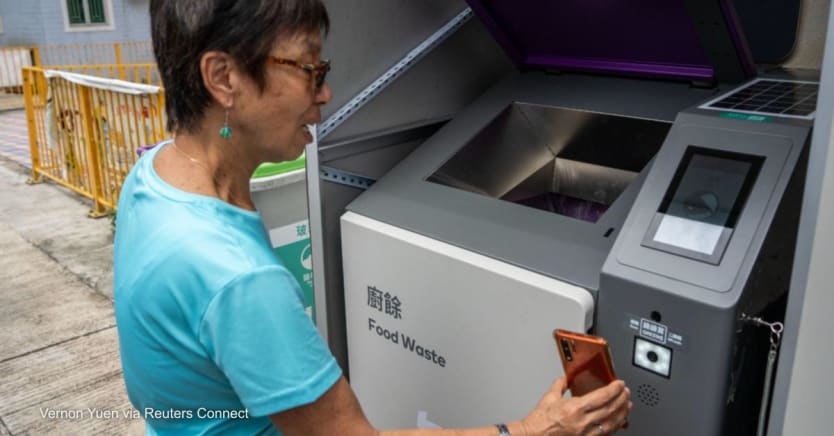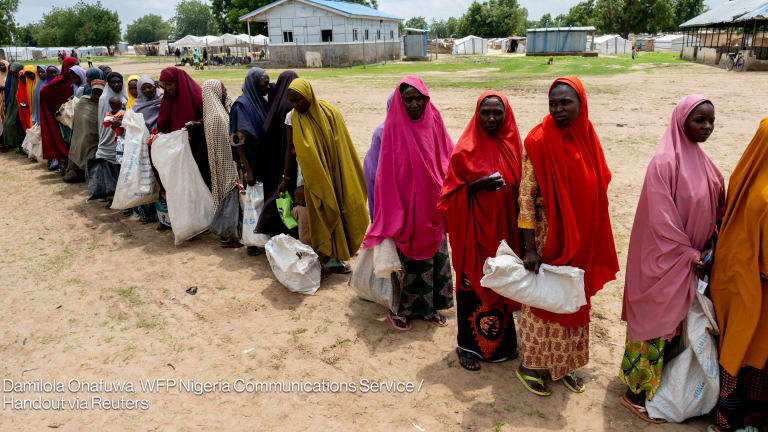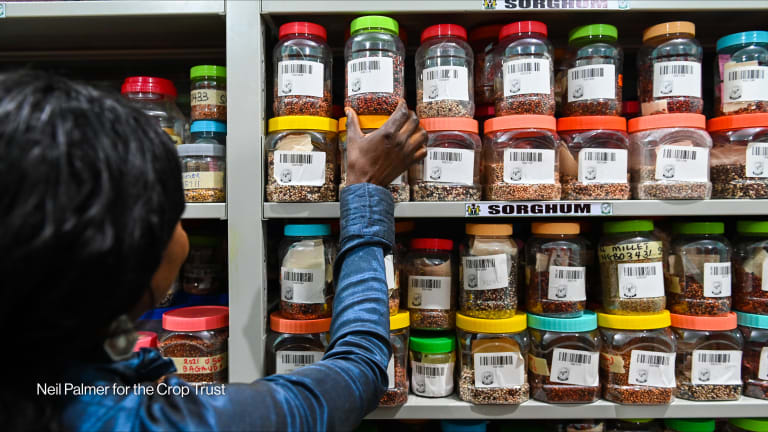
As climate change climbs on the global agenda, one issue is climbing along with it: food loss and waste. The estimated 1.3 billion metric tons of food that is produced but goes uneaten every year accounts for about 8% of global greenhouse gas emissions. If it were a country, it would be the third-biggest emitter. While its existence is evidence of inefficiency in the modern food system, its solution requires innovations that mimic nature.
In a natural ecosystem, no waste or loss exists. Everything is useful to some kind of organism or biogeological process. Think of a frog that dies on a humid forest floor. Perhaps it was the victim of a snake or a bird. The rest of its body will decompose thanks to insects, bacteria, and fungi. In turn, the nutrients released in decomposition become part of the soil from which tree roots feed themselves. Some of those nutrients slowly flood through rivers to the sea, providing food for all kinds of organisms, from fish to phytoplankton. After their decomposition, the remains settle on the seafloor and ultimately resurface as substrate for new soils.
This continuous use and reuse of biological materials is mainly a local process, but it has global ramifications. On our planet, everything is connected in vast ecological cycles that may take days or millions of years, but from which virtually nothing is lost forever.
Fast-forward to the arrival of humans. Pollution and environmental damage have been part of our development, which has accelerated as we’ve become more numerous, better fed, and far more affluent. Our material footprint has increased massively, and through shipping goods and food between continents, materials often end up far away from their source. In short, our food system in particular is truly global, and so are the impacts when food is lost or wasted.
Since the launch of the Sustainable Development Goals, awareness of food loss and waste has grown, and many have put forth creative ideas to reduce this inefficiency in the food system. Supermarkets now offer specials on “ugly” and misshapen vegetables and on perishable products that are close to their use-by date. Sensors make it possible to trace temperature exposure during transportation and storage, ensuring that food lasts. The internet has connected farmers directly to consumers. Food processors have introduced better machines to fill bottles and tins so that less food is lost in manufacturing.
These solutions present clear win-win situations, saving money and reducing the amount of food produced but never eaten. But these are no more than tiny adjustments to a planetary food system that is inherently wasteful and produces unnecessary surpluses.
So, while more of these solutions are welcome, bigger steps are needed if we are to halve food loss and waste by 2030. To achieve this, small and local solutions must marry with high-tech, global solutions. This especially gives us opportunities to design future-proof circular food systems in low- and middle-income countries that are now at the forefront of tackling critical global development challenges and that have high population growth concentrated in megacities.
Food loss and waste force us to rethink how we produce and consume food and how to involve the entire production chain. This goes beyond the popular “farm-to-fork” or “grass-to-glass” approach, right to the inputs such as agrochemicals and water, which are often wasted and then damage the environment. It also goes right down to the way consumers waste food.
Fundamentally, the world food system is one huge, circular system with myriad subsystems or a cascade of nutrient streams that go in many directions. At every juncture, we have to ask ourselves: What can be used where, and if it is not used, why is this the case?
For example, most of the food that restaurants waste could be used as feed for pigs and poultry, if treated for safety and if other measures are taken. This rarely happens, though, due to legislation put in place in many countries after earlier animal diseases. There are models to look to, however. In Japan, food scraps are increasingly used to feed animals as a way to help farmers keep expenses low during times when the cost of importing grains rises. This effort has been helped by a certification system that Japan established over 10 years ago to ensure the safety of such feed.
Preventing food loss and waste requires a combination of high-tech and what I call “soft-tech” solutions, which together constitute a system change. Consumer awareness is an example of a soft dimension helped by high-tech. People recycle more if they know what will be done with their waste, and they can feel good about the result. Providing information on the internet or via sensors on products to inform consumers about recycling is a powerful tool.
Blockchain, artificial intelligence, big data, and platforms linking streams of food and ingredients are other tools that allow producers and processors to link up and make the best use of food that might otherwise be lost in their stage of the supply chain.
In Kenya, for example, a company called Twiga has created an online platform to connect rural farmers with urban markets, ensuring fair and transparent pricing and delivery of everything from pineapples to cabbage. This helps more food make it from farm to people’s plates. Another company, eProd, has created a comprehensive agribusiness management tool that addresses training, access to credit, and more. That company is now working across five countries in East Africa.
To imagine a world with minimal food loss and waste, it is important to recognize that these are not problems that can be solved in isolation. Rather, food loss and waste are symptoms of our food and agricultural system as a whole. We can take inspiration from the ecosystems from which we evolved and, at the same time, use the best possible sets of technology to ensure the global food system can feed future generations while wasting very little.








